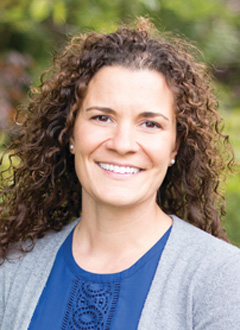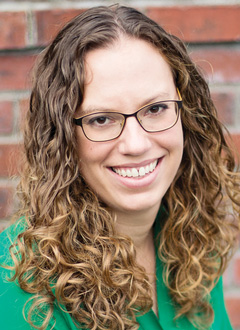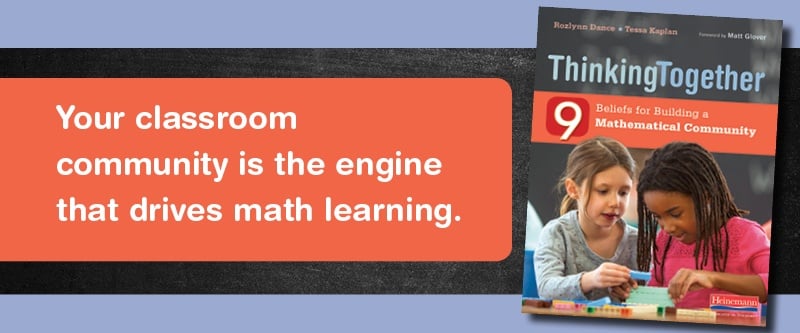
Adapted from Thinking Together by Rozlynn Dance & Tessa Kaplan.
Adapted from Thinking Together by Rozlynn Dance & Tessa Kaplan.
In our first few years of teaching, we spent a lot of time thinking about what mathematics instruction shouldn't be. The more difficult part, though, was figuring out what it was that mathematics should be.
The National Council of Teachers of Mathematics identifies eight key principles of effective mathematics instruction:
- Establish mathematics goals to focus learning.
- Implement tasks that promote reasoning and problem-solving.
- Use and connect mathematical representations.
- Facilitate meaningful mathematical discourse.
- Pose purposeful questions.
- Build procedural fluency from conceptual understanding.
- Support productive struggle in learning mathematics.
- Elicit and use evidence of student thinking. (NCTM 2014, 10)
These eight brief sentences seem simple yet are incredibly complex. Each of the eight principles, to be adequately implemented in elementary classrooms, must be thought about and planned strategically. Daily, we must ask ourselves:
- Is my task challenging enough, and does it meet my mathematical goal?
- How will I facilitate the connection between mathematical ideas and representations?
- What questions will I ask or encourage my students to ask?
- How will I support students in building their conceptual understanding as they struggle through a task?
- How will my students justify and share their thinking?
After years of teaching through problem-solving-based, student-centered methods, we have realized that there is one common thread that underlies success in all these tasks. As teachers, we must cultivate the structures and beliefs in a classroom community that lay the foundation for the mathematical growth of our students. We must create a kind, caring, trusting community of learners who feel comfortable tackling the unknown, taking risks, and making mistakes. Our foundation is built on a set of nine key beliefs.
- Everyone has a right to learn.
- We respect the ideas of others.
- Challenging problems help our brains grow stronger.
- Mistakes are great!
- Good mathematicians are brave and try new things.
- There are different strategies for solving a problem.
- It's not just about the answer.
- Good learners ask questions.
- Questions from the teacher help us learn and grow.
Implementing these beliefs in the classroom can help give your students a strong foundation upon which to build their mathematical understanding.
• • •
• • •
To learn more about Thinking Together and download a sample chapter, click the button below.
 Rozlynn Dance is a first grade teacher in Federal Way, Washington with more than a decade of elementary classroom experience. She has worked closely with colleagues developing curriculum and providing mathematical professional development for K–5 teachers.
Rozlynn Dance is a first grade teacher in Federal Way, Washington with more than a decade of elementary classroom experience. She has worked closely with colleagues developing curriculum and providing mathematical professional development for K–5 teachers.
 Tessa Kaplan is a K–6 Instructional Coach in Shoreline, Washington who is passionate about helping young children truly believe in themselves as mathematicians. She has 10 years of classroom teaching experience in public schools in Brooklyn and Washington State.
Tessa Kaplan is a K–6 Instructional Coach in Shoreline, Washington who is passionate about helping young children truly believe in themselves as mathematicians. She has 10 years of classroom teaching experience in public schools in Brooklyn and Washington State.



